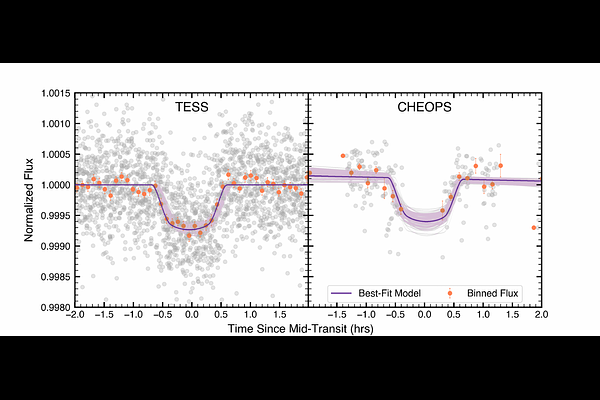An Eccentric Sub-Neptune Moving Into the Evaporation Desert

An Eccentric Sub-Neptune Moving Into the Evaporation Desert
Sydney Jenkins, Andrew Vanderburg, Ritika Sethi, Sarah Millholland, Joseph E. Rodriguez, Luca Fossati, Andreas Krenn, Emily Pass, Alex Venner, Paul Butler, Hugh Osborn, Aaron Householder, Carl Ziegler, Juliette Becker, Perry Berlind, Christopher Broeg, Michael L. Calkins, Jeffrey D. Crane, Tansu Daylan, Julien de Wit, Jason D. Eastman, David Ehrenreich, Gilbert A. Esquerdo, Michael Fausnaugh, Yadira Gaibor, David W. Latham, Monika Lendl, Andrew W. Mayo, Gaetano Scandariato, Steve Shectman, Stephanie Striegel, Johanna Teske, Thomas G. Wilson
AbstractThough missions such as Kepler, K2, and TESS have discovered $>$2,000 sub-Neptune and Neptunian planets, there is a dearth of such planets at close-in (P$\lesssim$3 days) orbits. This feature, called the Neptune desert or the evaporation desert, is believed to be primarily shaped by planetary migration and photoevaporation. However, this region is not completely devoid of planets--a small number of very hot Neptunes reside within the desert. These planets provide an opportunity to directly probe the effects of migration and photoevaporation. We present confirmation of TOI-5800 b, an eccentric sub-Neptune on a $\approx$2.6 day period that is likely actively undergoing tidal migration. We use radial velocity measurements from the Carnegie Planet Finder Spectrograph (PFS) to constrain TOI-5800 b's mass and eccentricity. We find that it has an unusually high eccentricity (0.39$\pm$0.07) for its short orbit. TOI-5800 is therefore currently experiencing high levels of tidal heating as it moves into the desert. Ranked as a top candidate for transmission and emission spectroscopy within its temperature and radius regime, TOI-5800 b is a prime target for atmospheric characterization with JWST. TOI-5800 b presents a unique opportunity to study the atmosphere of a planet undergoing tidal heating and to probe the composition of sub-Neptune planets.